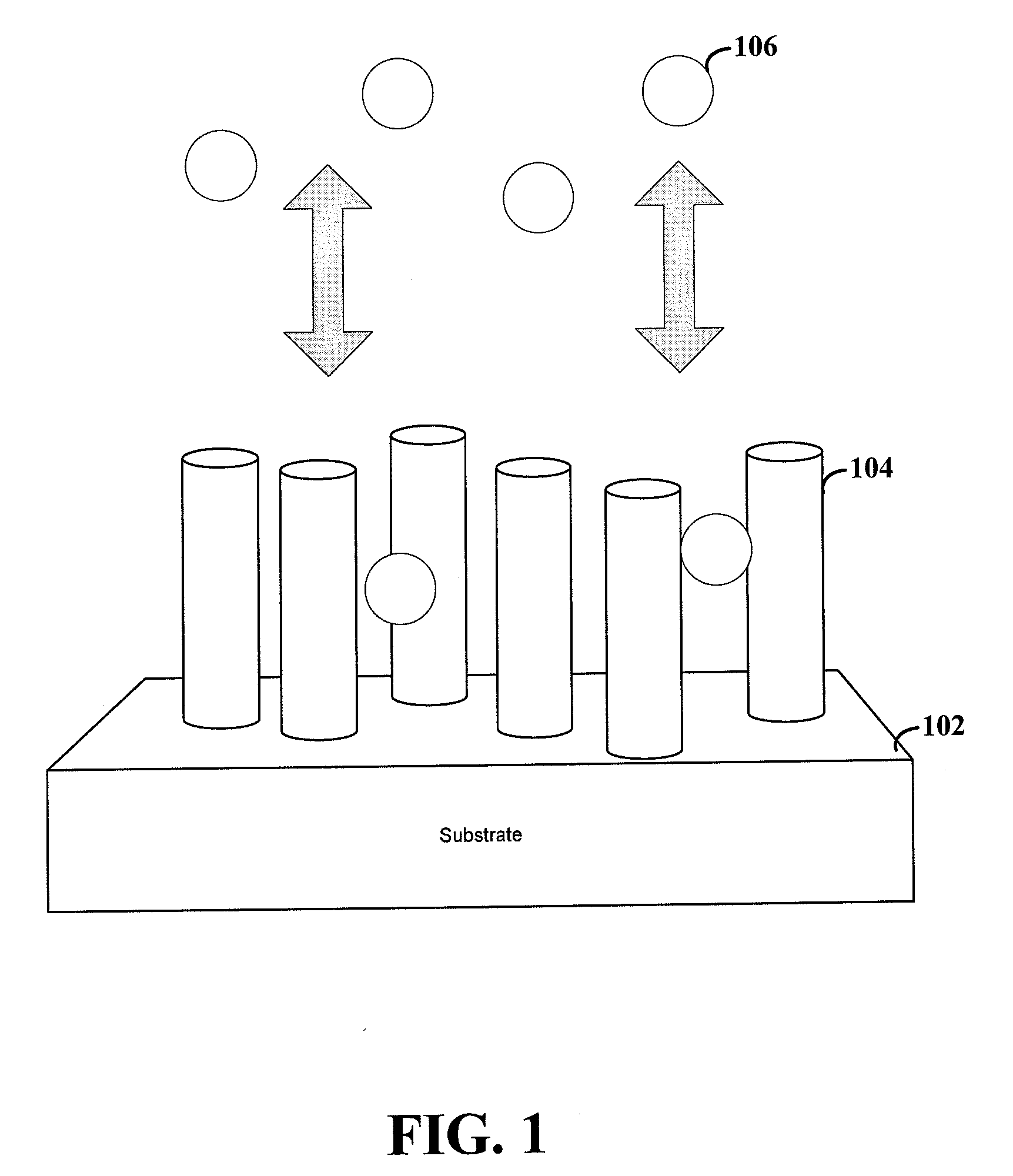Nanowire Battery Methods and Arrangements
a technology of nanowires and electrodes, applied in the direction of cell components, final product manufacturing, sustainable manufacturing/processing, etc., can solve the problems of short battery life, fading capacity, and often limiting factors, and achieve the effect of high energy capacity
- Summary
- Abstract
- Description
- Claims
- Application Information
AI Technical Summary
Benefits of technology
Problems solved by technology
Method used
Image
Examples
Embodiment Construction
[0024]The present invention is believed to be applicable to a variety of different types of ion batteries and devices and arrangements involving nanowire electrodes. While the present invention is not necessarily so limited, various aspects of the invention may be appreciated through a discussion of examples using this context.
[0025]Consistent with one embodiment of the present invention, a battery is implemented with an anode, a cathode, current collectors contacting the anode and cathode, and an electrolyte. The negative electrode or anode is composed of a plurality of nanowires extending from a substrate. The nanowires have an outer surface with multiple molecules that interact with the ions. The substrate from which the nanowires extend is attached to a current collector. The material comprising the current collector can include, but is not limited to, stainless steel, copper, nickel, aluminum, and other preferably metallic materials that are inert to Li. The current collector c...
PUM
| Property | Measurement | Unit |
|---|---|---|
| outer diameter | aaaaa | aaaaa |
| angle | aaaaa | aaaaa |
| angle | aaaaa | aaaaa |
Abstract
Description
Claims
Application Information
 Login to View More
Login to View More - R&D
- Intellectual Property
- Life Sciences
- Materials
- Tech Scout
- Unparalleled Data Quality
- Higher Quality Content
- 60% Fewer Hallucinations
Browse by: Latest US Patents, China's latest patents, Technical Efficacy Thesaurus, Application Domain, Technology Topic, Popular Technical Reports.
© 2025 PatSnap. All rights reserved.Legal|Privacy policy|Modern Slavery Act Transparency Statement|Sitemap|About US| Contact US: help@patsnap.com



